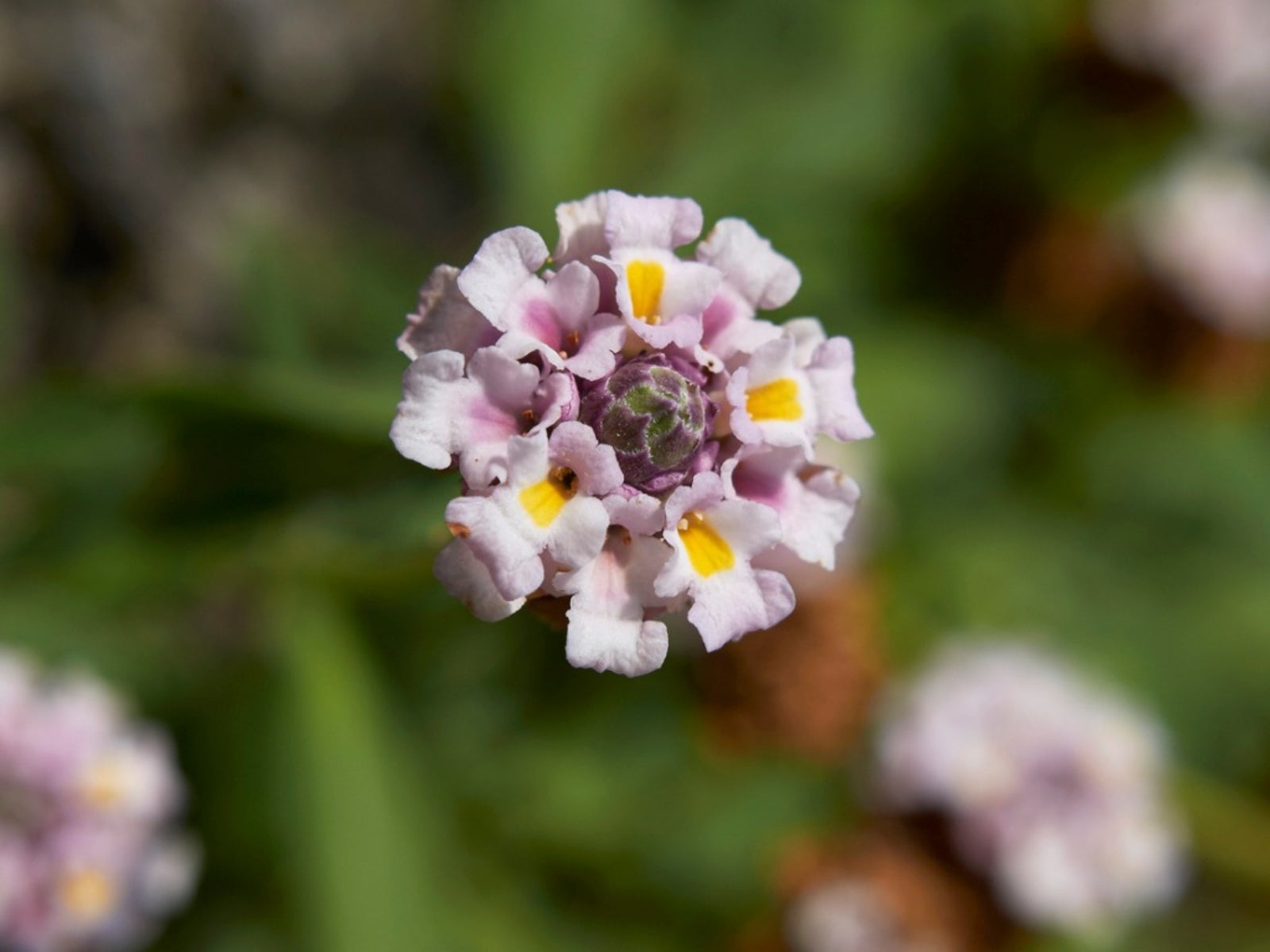Frog Fruit Plant Care: Information On Growing Frog Fruit Plants


Growing native plants is an excellent way to preserve national flora and have the added bonus of thriving easily since the soils and conditions are designed for their success. There are few plants designed to grow well in almost any climate, both for their beauty and as fodder for cattle, pigs, and many species of butterfly. Frog fruit is one of them.
What is Frog Fruit?
I love plants with odd names. Frog fruit (Lippia nodiflora syn. Phyla nodiflora) is also called turkey tangle frog fruit. What is frog fruit? It is a native plant of North America and in the Verbena family of flowering herbaceous plants. Frog fruit plants are low growing plants that develop only about 3 to 5 inches (7.5 to 13 cm.) in height. They are found wild in the southern half of the United States through tropical regions. The plants produce a unique flower from May until October that matures to white blooms with five petals on 4-inch (10 cm.) long spikes. Plants spread to nearly 3 feet (1 m.) and form a dense mat of semi-woody stems. Leaves are attractive with small notched indents along the edges. The plant prefers dry soil and will die back when freezing temperatures occur, with total death after an extended freeze. In the wild, they are found in inhospitable locations such as ditches, beaches, and fields. So can you grow frog fruit natives as part of a landscaped garden?
Can You Grow Frog Fruit in the Garden?
Frog fruit plants grow as evergreen perennials in warm to temperate zones and add a wild touch as ground covers and bedding borders. As an addition to the home garden, they make excellent low maintenance ground cover or brighten up hanging baskets as trailing plants. Frog fruit grows fairly quickly from seed directly sown after the soil has warmed or from cuttings. In fact, the plant is so prolific at self-seeding that you may end up with an invasive tangle on your hands. Although evergreen in most native regions, it will lose leaves in temperate climates when cold temperatures arrive in fall. In most cases, it will re-sprout in spring, provided the root zone wasn't exposed to serious freezing temperatures. Growing frog fruit as part of the native woodland garden provides food for deer and can be a good sacrificial plant if the animals are nuisances for other parts of the garden.
Frog Fruit Plant Care
Frog fruit plants are such hardy specimens that they really need little assistance to thrive. Trim back stems if they get into areas where they are not wanted. Since they prosper on almost any soil, the plants need little supplemental fertilizer. If you want increased blooms, use a liquid bloom food in spring. Water is an important part of frog fruit plant care. While they like dry soil and need good drainage, they will need additional moisture during the hottest months of summer for best growth. The plant's ease of care and spring and summer beauty make growing frog fruit a winner for the garden and landscape.
Gardening tips, videos, info and more delivered right to your inbox!
Sign up for the Gardening Know How newsletter today and receive a free copy of our e-book "How to Grow Delicious Tomatoes".

Bonnie Grant is a professional landscaper with a Certification in Urban Gardening. She has been gardening and writing for 15 years. A former professional chef, she has a passion for edible landscaping.
-
 Moody Blooms For Spring: 8 Types Of Black Flowers To Add Drama To Spring Displays
Moody Blooms For Spring: 8 Types Of Black Flowers To Add Drama To Spring DisplaysFrom midnight burgundies to inky violets, several types of black flowers can enrich and embolden a spring display. Try these brooding bloomers for a moody garden
By Tonya Barnett
-
 Can Snake Plants Live Outside? Everything You Need To Know For Snake Plants Al Fresco
Can Snake Plants Live Outside? Everything You Need To Know For Snake Plants Al FrescoSnake plants can live outside given the right conditions, but be careful that they don't take over! Learn the best way to use snake plants in your landscape.
By Mary Ellen Ellis